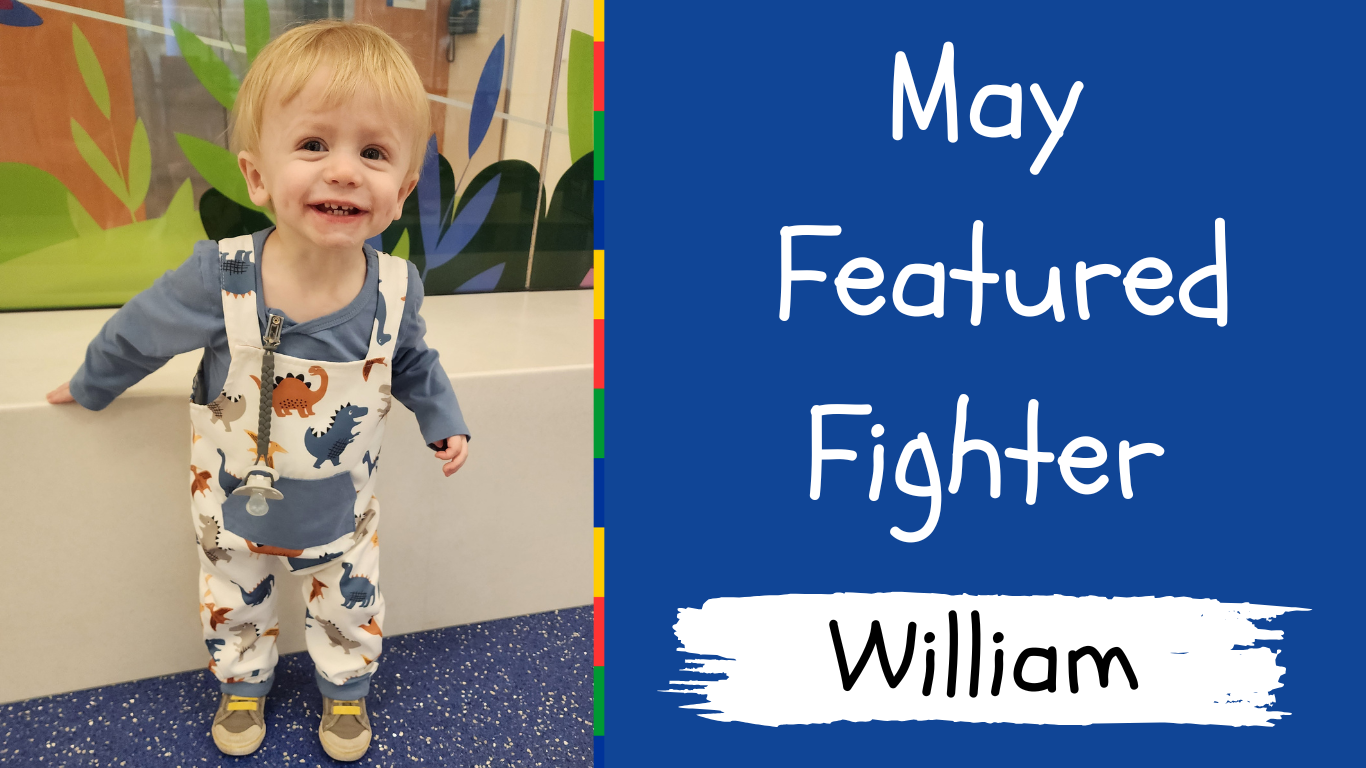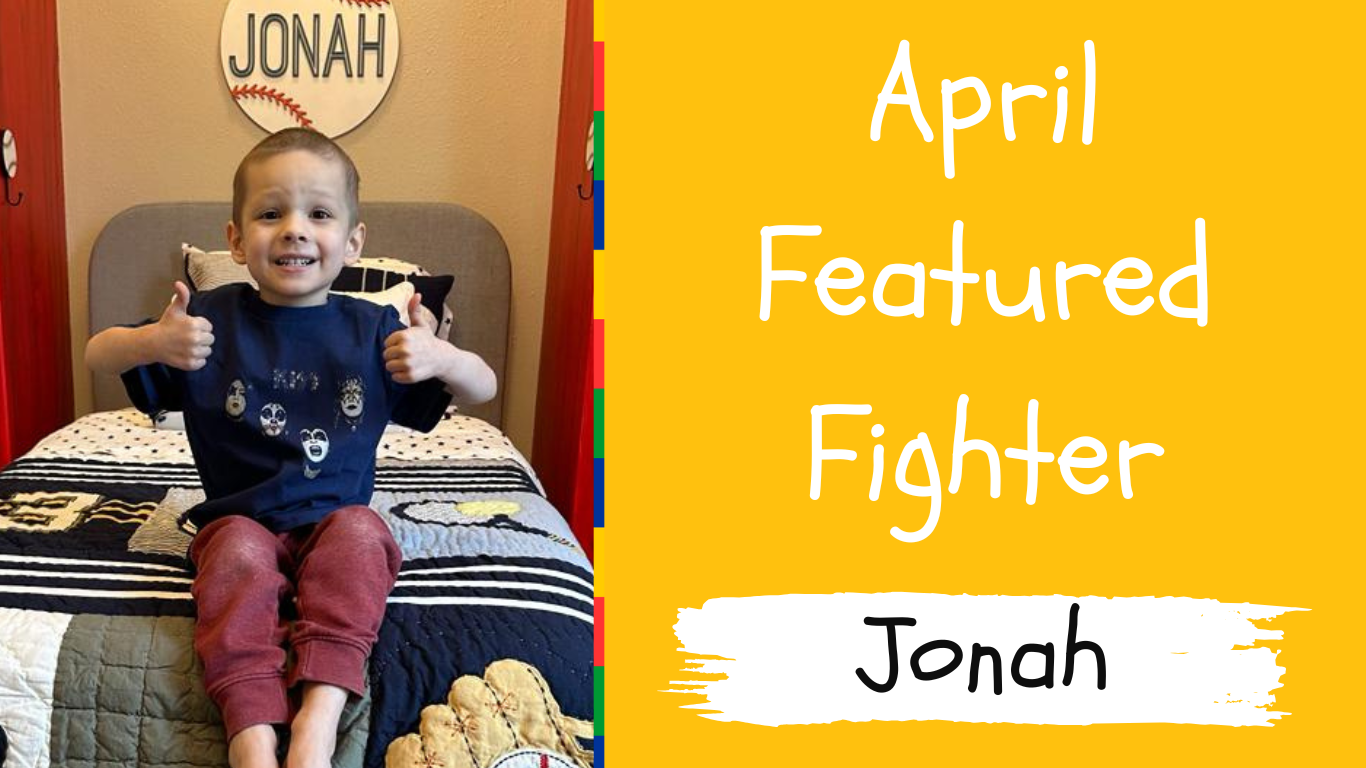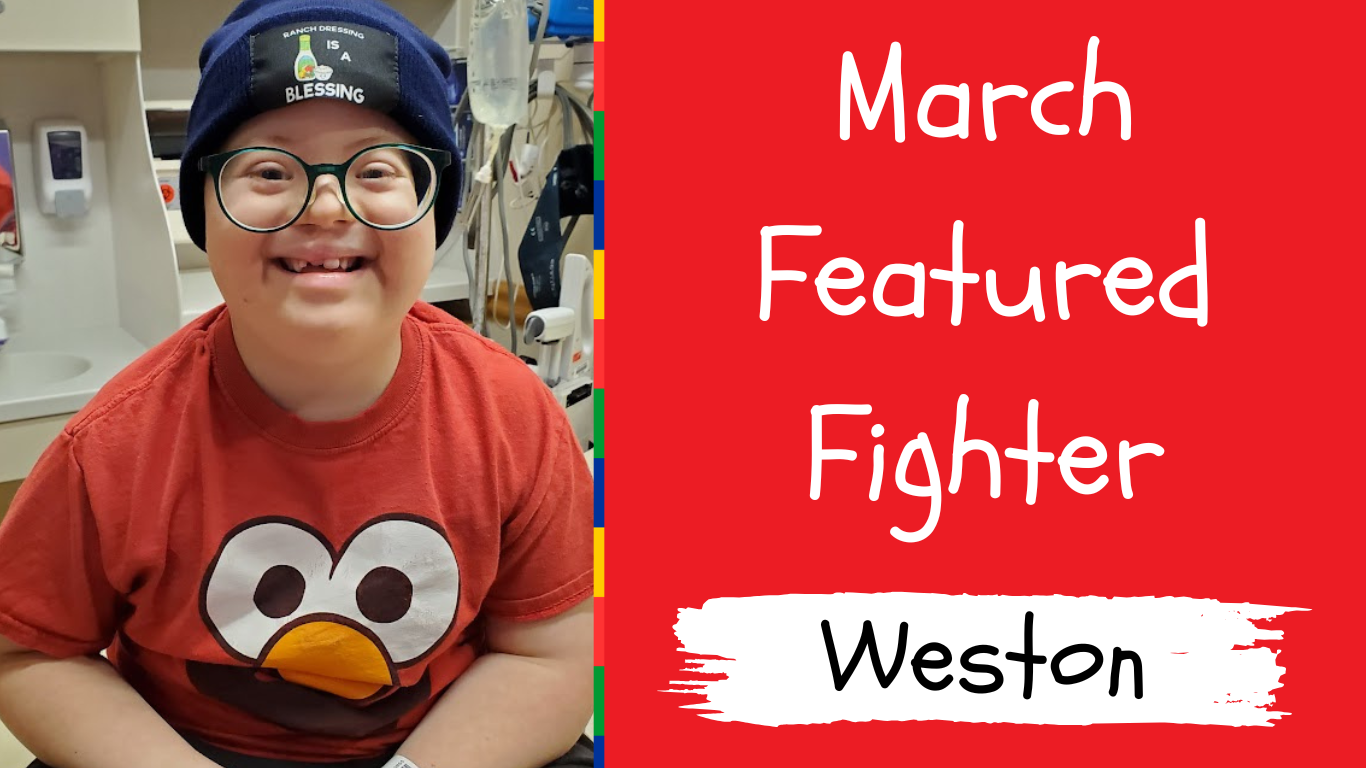Age: 5 Diagnosis: Bilateral Optic Pathway Gliomas and Gliomas of the Hypothalamus and Thalamus Meet…

Ryland’s Story
Age: 5
Diagnosis: Diffuse Intrinsic Pontine Glioma (DIPG)
Age at Diagnosis: 5
Favorite Things: Pokémon, Teenage Mutant Ninja Turtles, and Super Mario Bros
Meet Ryland, a silly, sensitive, and affectionate 5-year-old from Kaukauna, WI. He has a rapidly growing collection of police patches and loves Pokémon, Teenage Mutant Ninja Turtles, and Super Mario Bros. Ryland’s parents, Lindsay and Jeremy, admire his determined, “never give up” attitude and adore his goofy sense of humor.
In April of 2023, Ryland began experiencing esotropia, a misalignment of the eyes where one eye turns inward toward the nose. At the time, his parents questioned whether he was having too much screentime, seeking a simple cause to blame for this development. They brought him to an ophthalmologist who suggested an MRI which would be scheduled for mid-August.
But, in the weeks leading up to the scan, his parents and teacher began noticing weakness and clumsiness on the right side of Ryland’s body as well as a change in his gait, his knee locking back with each step. In July, their local pediatric office ordered a CT scan in search of an explanation for these changes. After the scan, they were sent home to wait for the results that would ultimately change the course of their lives.
Hours later, Lindsay and Jeremy received the news that a mass had formed in Ryland’s brain. The mass was blocking ventricles from draining, causing fluid and pressure buildup. They immediately packed their bags and headed south to Children’s Wisconsin. The following day, technicians performed an MRI on Ryland’s brain and spine, and doctors surgically placed an EVD shunt to temporarily relieve the swelling in his brain. Once the swelling had decreased, the neuro team performed a needle biopsy for diagnostics. While waiting for the results, Jeremy and Lindsay agonized over a potential cancer diagnosis, but little Ryland maintained his goofy sense of humor, coming up with only the best jokes to keep things light:
Q: How do you make a hospital go crazy?
A: Press the emergency button!
About a week later, the diagnosis was confirmed. Ryland had Diffuse Intrinsic Pontine Glioma (DIPG), a brain tumor in the worst possible place: the brain stem, which controls many of the body’s vital functions like breathing, heart rate, and blood pressure.
Among childhood cancers with solid tumors, DIPG is uniquely inoperable because it plants itself in the brain stem. The median survival rate for a child diagnosed with DIPG is 8-11 months. Yes, months. Only 10% of children with DIPG survive 2-years; 2% make it to 5-years. Most children are initially treated with steroids followed by radiation therapy; however, no known chemotherapy drugs have been found to effectively treat this disease. Although the team immediately began searching for a clinical trial for Ryland, the family knew that his care would be palliative, meaning it would be used to boost Ryland’s quality rather than quantity of life. Eventually embracing this heavy reality, his parents held to this refrain, “His life is going to be shorter, but we will make it sweeter.”
Soon after diagnosis, Ryland went on a short course of steroids to keep his intracranial pressure in check, and he slowly began regaining strength and coordination on the right side of his body. This was followed by 27 radiation treatments that were thankfully successful in reducing the size of the tumor. But then, that was it for treatment. The only possible thing left was the team’s search for a clinical trial that could help extend or improve Ryland’s quality of life.
As they waited for a trial, Ryland’s family decided life would not stop with his diagnosis and that, in the upcoming months, they would give Ryland as normal a life as possible—embracing all the little moments—not taking each other for granted. For them, part of living a “normal life” was allowing Ryland to attend school like any other 5-year-old. Ryland’s wonderfully supportive school organized a school care team to help him experience kindergarten to the fullest with as few limitations as possible. Ryland’s teacher and sweet little classmates have also been cheering him on along the way, “celebrating the good days” with him, and even threw a half birthday party for him.
In October, the family learned that Ryland qualified for a clinical trial based out of Seattle Children’s Hospital. In the trial, Ryland’s harvested T-cells will be reprogrammed to recognize and target four proteins that are present on the surface of many pediatric brain tumors. Then, the reprogrammed cells will be put back into Ryland’s skull through an implanted reservoir. Ryland’s participation will begin in late January, making him the fourth child in the country admitted to this trial.
In the months leading up to the trial, Ryland had some big things lined up: a Mario Bros-themed dream bedroom makeover from Special Spaces and a Make-A-Wish trip for a little magic. Although he first wished for “immortality,” Make-A-Wish was able to fulfill his second wish which was for special memories with his family at Disney World. Though he fatigued easily, the assistance of a stroller ensured he could experience everything he desired, full throttle, especially the rollercoasters. To Ryland, those ice cream-filled days whizzing through the air with his family in the parks were simply magical, and to his parents, the quality time and memories meant the world.
Soon after their return from Disney, Ryland hit another rough patch. An MRI revealed that Cerebral Spinal Fluid (CSF) was causing intracranial pressure on his optic nerve, which was likely causing the nausea, fatigue, and weakness Ryland had recently been experiencing. He went through yet another surgery, this time to get a system placed that included a programmable shunt to drain this excess fluid into his abdomen and a reservoir that would allow for delivery of the CAR T-cell therapy in the upcoming clinical trial. Since then, little Ryland has hit a few recent bumps in the road with his motor skills, but his tumor remains stable, and he continues to fight for good days and more of them.
When Ryland gets to Seattle, he will only need to receive his therapy in the hospital one day per week. Jeremy and Lindsay hope to fully embrace any days they have together outside the hospital- taking in the mountains, connecting with friends, getting spontaneous on the good days, “leaving no day wasted”. They want to not only make beautiful memories with Ryland but also proactively care for the tender heart of Ryland’s little 3-year-old sister, Felicity, during this time. As Jeremy said, “Right now, it’s about outrageous love for our kids.”
Ryland’s parents have had to absorb the reality that eleven months is the average life expectancy of a child diagnosed with DIPG. Throughout this journey, Jeremy, a high school math teacher, has found himself measuring time out of 11:
Month 2 of 11 was the end of radiation therapy.
Month 3 of 11 was his Make-A-Wish trip.
Months 4 & 5 of 11 were the holidays.
Month 6 of 11 will be the start of the trial and the family’s northwest adventure.
Jeremy’s hope is that Ryland can make it to the right side of that bell curve.
In months 10-13, he hopes to watch Ryland ride a bike, go swimming, ride the Zippin Pippin at Bay Beach, and go to the AJR concert. If Ryland can celebrate his 6th birthday in June, that will feel like a true win for their family.
Approximately three hundred children are diagnosed with DIPG in the United States each year. Every one of them receives a terminal prognosis at diagnosis. DIPG causes an immeasurable loss for our world- far too many young lives and far too much promise taken from us.
More research must be funded to offer hope for kids with DIPG. Children like sweet Ryland deserve so much better. We can’t offer immortality, but wouldn’t it be beautiful to offer hope?
Thank you for supporting research. Thank you for giving hope.
Copyright protected work of the MACC Fund. May not be used or distributed on behalf of any other organization or commercial purpose without MACC Fund’s explicit consent.




